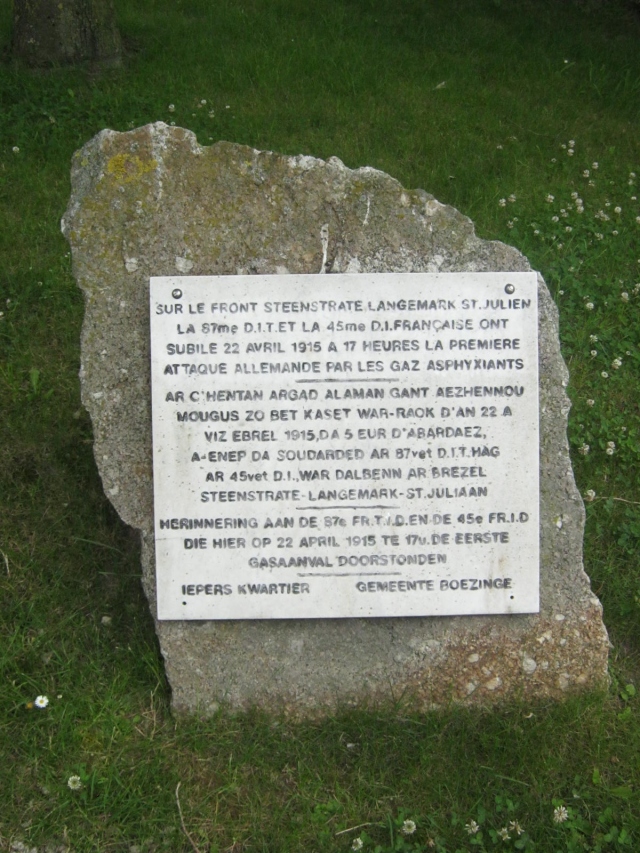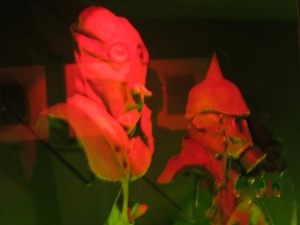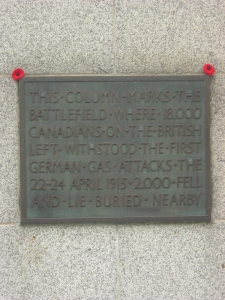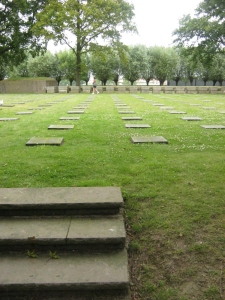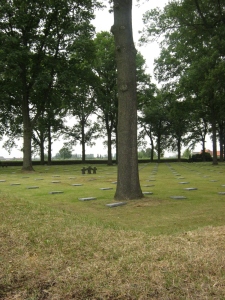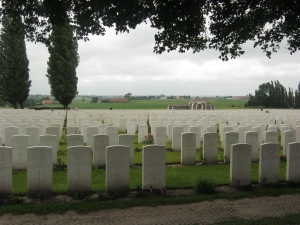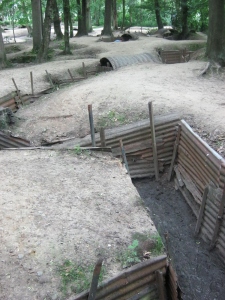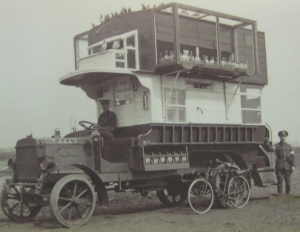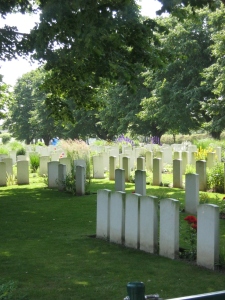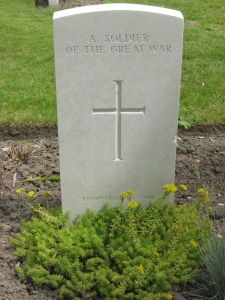At 1700 on 22 April, 1915, the German army released 168 tons of chlorine gas from cylinders near Ypres. The greenish cloud drifted gently towards a line of French troops. Though it was not the very first use of chemical weapons (Ironically, the French were first, using tear gas in August, 1914) but it was the first successful use of lethal gas. The Hague Treaty of 1899 prohibited the use of asphyxiating gas in artillery, however the Germans had released the gas from 5,730 canisters, and argued they had not violated the treaty.
Fritz Haber, a German chemist who had developed the weaponization of chlorine gas, was on hand to supervise its use. I feel perfectly comfortable describing Haber as sub human. He was awarded the Nobel Prize in 1918 for his work in developing ammonia synthesis, crucial to the production of fertilizers, and argued that gas was not inhumane because “death is death“. He might know. His wife Clara, the first woman to earn a PhD at the University of Breslau (also in chemistry) was so horrified by his use of chlorine in Ypres that she took his service revolver and committed suicide in their garden after an argument with him on the subject on 2 May. Haber left for the Russian front to oversee the use of gas there the next morning, leaving his 13 year old son to discover his mothers body.
Continuing the irony of this story, the patriotic Haber happened to be Jewish. His work led to the development of Zyklon-B, the cyanide based gas used to kill 1.2 million Jews, including his extended family, after he escaped Germany.
World War one debuted a number of what we now call “Weapons of Mass Destruction”, and to place that political phrase into perspective, keep in mind that the pressure cookers used to make the bombs of the Boston Marathon are now being called Weapons of Mass Destruction, yet we could find nothing that fit that description in Iraq? The horror of the war changed many aspects of humanity, Sigmund Freud was so shaken that he altered his views on libidinal drives in relation to self preservation. Our ability to develop more “efficient” ways of killing ran far ahead of our ability to love.
In addition to poison gas, flame throwers were first used in and around Ypres. A stream of flaming petrol could be projected twenty yards. This is much like directly applying Napalm.
Machine gun technology was perfected, allowing one gun team to replace one hundred rifles. Pillboxes (hardened gun placements) were arranged so that a field of crossing fire created a zone of death.
The internal combustion engine, the caterpillar track, and steel armor came together to create the first military tanks. Mobile firepower brought a change in tactics.
Beginning with zeppelins and progressing to biplanes, air warfare was born. Death from the skies and in the skies was a new aspect to the previous land based armies. Developments in artillery tactics, aiming, and projectiles brought huge long range shells, and smaller mortars, into the battlefield.
The submarine, or U-boat, changed naval warfare. 3.5 million tons of supplies on merchant ships were lost to U-boat attacks, which was largely responsible for drawing the United States into the war.
Most appalling, at least to me, is that the concept of a war of attrition, fighting until your enemy no longer had the supplies to fight, changed in tone. War changed from economic attrition to human attrition. Both the Central powers and the Allies used the resources of human lives as one would use water on a fire. Commanders on both sides faced recriminations after the war for the number of lives lost. Belgium, a multilingual country, was divided in that the officers were largely French, and the soldiers largely Flemish. Officers would give orders in French and followed with “et pour les Flamands, la même chose”, which means “and for the Flemish, the same thing”. Insert obscenity of your choice here.
In the Ypres region, 90,000 soldiers were lost. I don’t mean to say died, that number is somewhere near one million. 90,000 are still missing, lost in the mud of the battlefield (one story is of a soldier seeing an Australian helmet in the mud, and upon attempting to retrieve it found that it was still attached to the head of its owner. He reached through the mud to place his hands under the arms of the buried soldier, and the Australian sputtered through the mud “Brace yourself man, I’m on horseback”). Despite extensive cemeteries and memorials, the entire region is one mass grave.
The weapons used in Oriental martial arts are developed from agricultural implements. We will always find ways to beat our ploughshares into swords, research into accidental vapor cloud explosions led to the development of thermobaric weapons. The physicist Kenneth Bainbridge, who had a long history of inventions that benefited humanity, was director of the Trinity atomic bomb tests. After the first test, he remarked to Robert Oppenheimer, “Now we are all sons of bitches”.
Should you find yourself in Belgium, I highly recommend Flanders Battlefield Tours if you wish to see Ypres, or any of the surrounding historical sites. Our guide, Genevra (think “Jennifer”), was thorough and precise, filled with facts that I have confirmed while writing this series. Most importantly, she was respectful to the dead, and the sacrifices of all who served.
